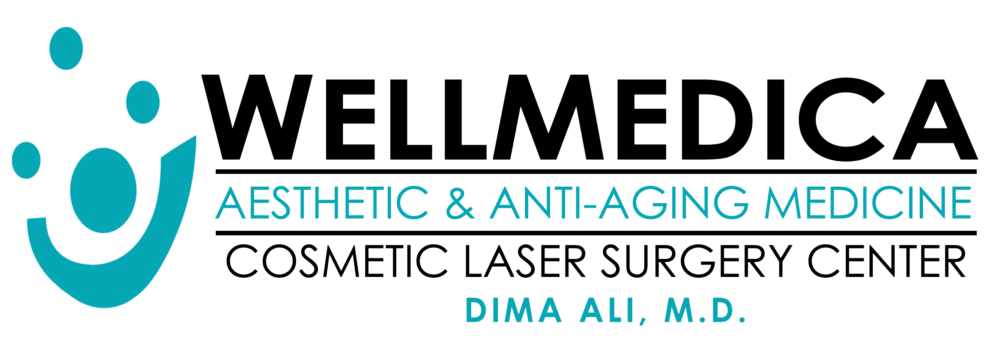Moles & Birthmarks
At WellMedica Reston Virginia, we offer comprehensive solutions by expanding our focus to include whole-body issues that might impact your skin. Remember, prevention is better than cure.
Mole & birth mark removal | BEFORE & AFTERS
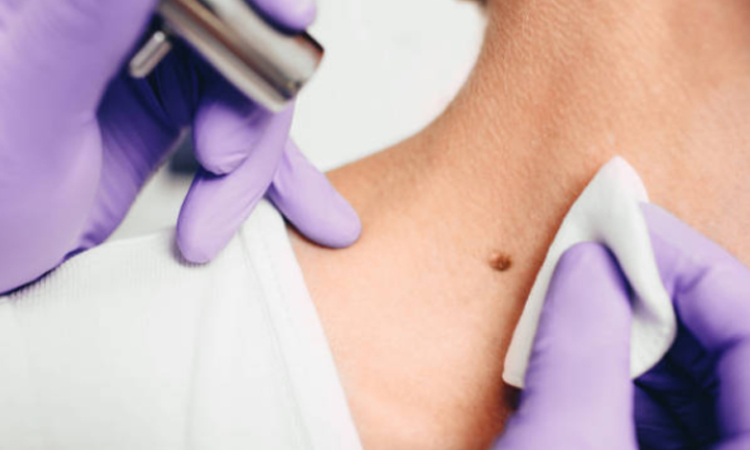
What Are Moles and Birthmarks?
A birthmark is a flat dark spot on the skin which can appear in a variety of colors, shapes and sizes. While some birthmarks are small and inconspicuous, others are much more obvious and can affect self-esteem. In some cases, certain moles can become a health risk and will require treatment. Some birthmarks do fade or completely disappear over time, however, there are others that will never fade or go away. Birthmark removal offers a solution to people who are self-conscious about their appearance and worried about the possibility of health risks associated with certain moles.
Moles are dark spots or irregularities found in the skin. They come in various shapes and sizes. Moles can appear anywhere, from the nose and other facial areas, as well as arms and chest areas, in groups or by themselves. They can be present at birth, or can begin to appear over time. If your moles are bothersome or uncomfortable, or you suspect a mole is a precursor to skin cancer, it is easy to have them removed by Dr. Dima Ali. Removal, whether by laser or other surgery procedures, is a cosmetic surgery procedure that provides a solution to people wanting to improve their appearance and reduce health risks.
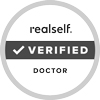
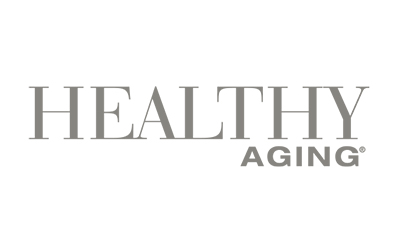




What are the differences between a mole or birthmark?
What are the types of birthmarks?
- Hemangioma — These are bluish, pink, or purple or red birthmarks that tend to grow in the first few months after you are born. They can grow in any location on the body, but typically show up on the head and neck or arms and legs. Sometimes they fade on their own, so they are unlikely to need treatment on their own unless they are affecting you in another way. Vascular birthmarks like this are seen where blood vessels congregate close to the skin.
- Atypical mole – irregular color and undefined borders.

- Mongolian spot – flat, bluish and irregularly shaped.
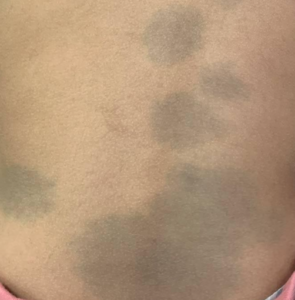
- Café au lait spots — This is an area of flattened and dark skin that can look like light brown patches. These types of birthmarks are usually permanent and very common. You may notice cafe au lait spots anywhere on the body, as they can grow in any location. These pigmented brown marks are often removed for cosmetic reasons.
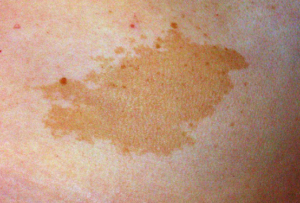
- Port wine stains — A port wine stain is a permanent birthmark that starts out as a lighter area and darkens during aging. They can often be found on the face as a dark red and flat mark. You may want to treat these birthmarks due to emotional and cosmetic reasons, as they can draw a lot of attention. A port wine stain belongs to a class of pigmented birthmarks similar to an au lait spot that can occur as a strawberry color or darker.
- Congenital nevus — This is a painless type of mole that appears on the scalp or the trunk of the body. Knowing that you have this type of birthmark is important as those who develop it as children are at an increased risk for developing skin cancer. It is dark and irregularly shaped. Birthmark removal by surgical excision
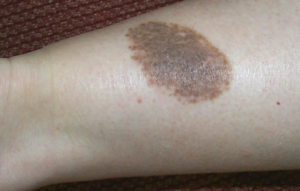
- Salmon patches/stork bites — A salmon patch is a reddish or pink patch often found above the hairline at the back of the neck or on the eyelids. Some of them do become less obvious marks over time. They can be treated by birthmark removal.
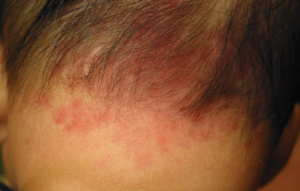
Are birthmarks hereditary/caused by genes?
Scientists are not sure what causes moles or birthmarks to appear. There is some indication that proteins present in the placenta are correlated with some birthmarks but for most people unless they have had excessive sun exposure they just develop moles between the ages of 10-30. Those who have more than 50 moles or certain types of congenital birthmarks are more prone to skin cancer and should watch their pigmented birthmarks for changes.Where Do Moles or Birthmarks Usually Form?
They typically form on the face, neck, arms, and sometimes legs, although moles may develop anywhere. Some may be flat, while others will have a raised appearance. If you have a raised mole that has formed in a place that interferes with comfort of clothing they are usually much easier than birthmarks to remove and have a high success rate. Come in to WellMedica clinicthe clinic to discuss your options for a quick and painless removal.
Diagnosis Of Moles And Birthmarks
If you are concerned your birthmark or mole has changed or grown and might be an early sign of cancer you can have a biopsy done to diagnose this at an early stage. Make sure to discuss with Dr. Dima Ali your dermatologist to be aware of any changes in your skin and any areas that worry you, and have a total body mole check done routinely to keep an eye on areas that you can’t see.
Treatments to Remove Moles and Birthmarks
There are various types of marks and there are various options in how they can be removed, including laser treatments or surgical excision. While birthmarks can be removed in order to enhance appearance, they may also be removed in order to reduce the possibility of health risks from occurring. The method used for removal depends upon the type of birthmark and the severity of its condition. Most of these treatments have little to no side effects and are good treatment options for birthmarks like port wine stains, vascular birthmarks, mongolian spots and hemangiomas.
Typically moles do not require any treatment but they may be cosmetically embarrassing or uncomfortable if they rub on your clothing. In these cases you may choose to have the mole surgically removed. Obviously, moles that are showing signs of possible melanoma need to be removed and examined.
Removing a mole takes just a few minutes. With a numbing cream to assure comfort during the procedure, the process is short and effective. Types of treatment for moles include:
- Excision — Shaving with a blade. If a mole has cells under the skin that require a deeper incision to remove the entire mole and prevent it from returning it may require a few stitches to close.
- Freezing — To freeze a mole, liquid nitrogen can be sprayed or swabbed onto the spot. This damages the mole’s cells and they die. In as little as a week or two the mole will simply fall off after this treatment.
- Burning — In this procedure, an electric current heats a wire that is used in excising a mole.
Birthmarks are much more difficult to remove than moles. Options to remove or reduce them include:
- Corticosteroids — Injections of corticosteroids are placed directly into hemangioma birthmarks. This can either stop their growth or cause them to shrink.
- Laser therapy — Port-wine stains and others that are close to the surface may respond to laser energy to reduce the capillaries. The laser destroys the capillaries connected to the birthmark and they begin to recede. It can take a number of laser sessions to see optimal results. After being treated to have a birthmark removed with pulsed light or a dye laser, the vascular birthmark or mole may fade away without the need for further procedures, and without damage to the surrounding skin.
Surgical removal — This option is not very common. If other treatments have not been effective in reducing or removing them surgery can be used in such cases.
Table Of Contents
CONTACT US
Office Hours
|
MONDAY |
9:00 AM – 5:00 PM |
|
TUESDAY |
9:00 AM – 5:00 PM |
|
WEDNESDAY |
9:00 AM – 5:00 PM |
|
THURSDAY |
9:00 AM – 5:00 PM
|
|
FRIDAY |
9:00 AM – 3:00 PM |
PRIVACY POLICY | CANCELLATION | POLICY GLOSSARY
© Copyright 2023 Wellmedica All Right Reserved Board Certified Cosmetic Laser Surgery and Anti-Aging Medicine – Reston, VA
